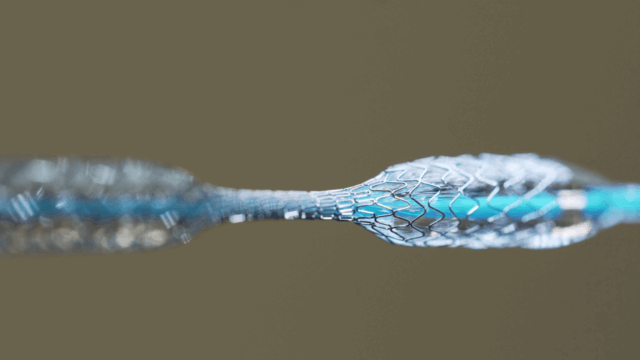Provisional stenting in bifurcations has shown better results at mid and long term vs initial two stent strategy, according to Bifurcation Club consensus. However, approximately 22% of patients initially treated with provisional stenting require a second stent.

Studies comparing percutaneous coronary intervention (PCI) vs coronary artery bypass graft (CABG) such as the EXCEL and NOBLE, have indicated that between 35% and 50% of patients undergoing complex PCI will receive two stents. Therefore, it is vital to adequately optimize PCI to treat these lesions with this technique.
The use of intravascular imaging, such as IVUS, has been shown superior to conventional angiography when it comes to major adverse cardiovascular events (MACE). A prior study run by the Asan Medical Center research group proposed the 5-6-7-8 criterion to evaluate optimal minimal stent area (MSA) in left main PCI. However, this study included a heterogeneous population (72% with a single stent and 28% with two stents) and assessed restenosis within brief 9 months.
The aim of this study run by Kim et al. was to review IVUS derived MSA cutoff values to establish optimal stent expansion in patients undergoing crush technique for left main treatment, at 5 year follow-up.
Read also: Edge-to-Edge Tricuspid Valve Repair 3-Year Follow Up.
It included patients with left main compromise receiving crushing with two stents in one center in Seoul, South Korea. Stent and post dilation balloon selection was based on IVUS outcomes. The following segments were assessed by IVUS: anterior descending ostium, 5 mm distal to the carina; circumflex ostium, 5 mm distal to the carina; and the left main distal segment.
Primary end point at 5 years was MACE, defined as a composite of all-cause mortality, lesion related acute myocardial infarction and clinically driven target lesion revascularization.
292 patients were included, mean age 64 ± 9.9 years; 76.7% were men and 33.6% were diabetic. Only 6.8% of patients presented an acute event upon admission. The main branch used average 1.5 ± 0.7 stents (mean 28.0 ± 6.1 mm length and 3.7 ± 0.4 mm diameter), while the side branch used 1.1 ± 0.4 stents (21.8 ± 7.1 mm length and 3.0 ± 0.3 mm diameter).
MSA values for MACE prediction at 5 years were 11.8 mm² for distal left main (area under the curve- AUC, 0.57 [95% CI, 0.48–0.67]; P=0.15), 8.3 mm² for the anterior descending ostium (AUC, 0.62 [95% CI, 0.54–0.71]; P=0.02) and 5.7 mm² for the circumflex ostium (AUC, 0.64 [95% CI, 0.55–0.74]; P=0.01). Using these criteria, we observed that 64.7% of distal left main, 55.1% of anterior descending ostia and 48.3% of circumflex ostia presented underexpansion.
Read also: Should We Withdraw Anticoagulation Before TAVR?
The most significant MACE predictor was anterior descending and circumflex ostium underexpansion (HR, 3.14 [CI 95%, 1.23–8.06]; P=0.02), not distal left main, which was not associated to prognosis. Compared against a group with adequate expansion, patients with combined anterior descending and circumflex underexpansion presented five times higher MACE (HR 5.49 [95% CI, 2.10–14.3]; P<0.001) and significantly higher mortality rates (HR, 7.11 [CI 95%, 1.40–36.1]; P=0.018).
Conclusions
This study on IVUS in left main two stenting has shown that ≤8.3 mm² MSA in the anterior descending ostium, and ≤5.7 mm² in the circumflex ostium is associated with significantly increased MACE risk at 5 years. Therefore, optimizing PCI using these IVUS parameters is crucial.
Original Title: Optimal Minimal Stent Area and Impact of Stent Underexpansion in Left Main Up-Front 2-Stent Strategy.
Reference: Kim JH, Kang DY, Ahn JM, Kweon J, Choi Y, Kim H, Lee J, Chae J, Kang SJ, Park DW, Park SJ. Optimal Minimal Stent Area and Impact of Stent Underexpansion in Left Main Up-Front 2-Stent Strategy. Circ Cardiovasc Interv. 2024 Jan;17(1):e013006. doi: 10.1161/CIRCINTERVENTIONS.123.013006. Epub 2024 Jan 16. PMID: 38227699.
Subscribe to our weekly newsletter
Get the latest scientific articles on interventional cardiology





